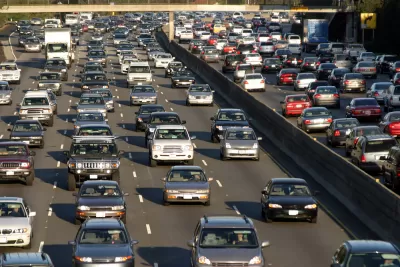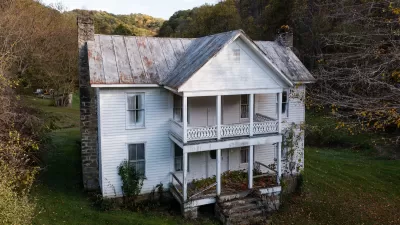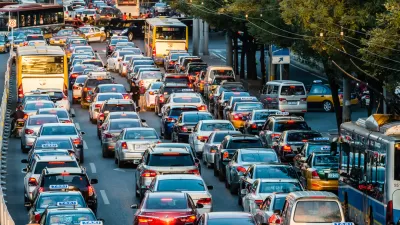A new analysis looks at how income and population density are related to car ownership and some ways that the design of cities can help lessen car dependence.

Henry Grabar writes about trends in car ownership rates and the relationship to the income levels and population density of cities. He asked Issi Romem of Trulia to analyze data for metropolitan areas across the country:
Here’s what Romem found: In dense, transit-rich cities like New York and Boston, vehicle ownership is more closely linked to population density than to income. What kind of neighborhood you live in is likely to align with whether you own a car, or two. In places like Los Angeles and Houston, vehicle ownership is much more closely tied to income. Families who make more money buy more cars.
He notes that some cities show a mix of factors. In Chicago, for example, the lowest-income areas have low car ownership rates, but ownership rates increase both with income and density. "On average, Romem finds, rising income and falling population density have approximately the same positive correlation with car ownership," says Grabar.
Grabar considers what these findings mean for policy and environmental initiatives like the Green New Deal. He suggests that city designs that support car driving as a choice rather than a necessity would provide the biggest environmental and social benefits.
"We can try to build more cities like these, where jobs are accessible by fast, frequent transit and housing is dense enough to support walkable amenities. Or we can make it possible for more people to live in the neighborhoods that have gotten something right," he concludes.
FULL STORY: Where Rich People Don’t Own Cars

Alabama: Trump Terminates Settlements for Black Communities Harmed By Raw Sewage
Trump deemed the landmark civil rights agreement “illegal DEI and environmental justice policy.”

Planetizen Federal Action Tracker
A weekly monitor of how Trump’s orders and actions are impacting planners and planning in America.

The 120 Year Old Tiny Home Villages That Sheltered San Francisco’s Earthquake Refugees
More than a century ago, San Francisco mobilized to house thousands of residents displaced by the 1906 earthquake. Could their strategy offer a model for the present?

In Both Crashes and Crime, Public Transportation is Far Safer than Driving
Contrary to popular assumptions, public transportation has far lower crash and crime rates than automobile travel. For safer communities, improve and encourage transit travel.

Report: Zoning Reforms Should Complement Nashville’s Ambitious Transit Plan
Without reform, restrictive zoning codes will limit the impact of the city’s planned transit expansion and could exclude some of the residents who depend on transit the most.

Judge Orders Release of Frozen IRA, IIJA Funding
The decision is a victory for environmental groups who charged that freezing funds for critical infrastructure and disaster response programs caused “real and irreparable harm” to communities.
Urban Design for Planners 1: Software Tools
This six-course series explores essential urban design concepts using open source software and equips planners with the tools they need to participate fully in the urban design process.
Planning for Universal Design
Learn the tools for implementing Universal Design in planning regulations.
Clanton & Associates, Inc.
Jessamine County Fiscal Court
Institute for Housing and Urban Development Studies (IHS)
City of Grandview
Harvard GSD Executive Education
Toledo-Lucas County Plan Commissions
Salt Lake City
NYU Wagner Graduate School of Public Service





























